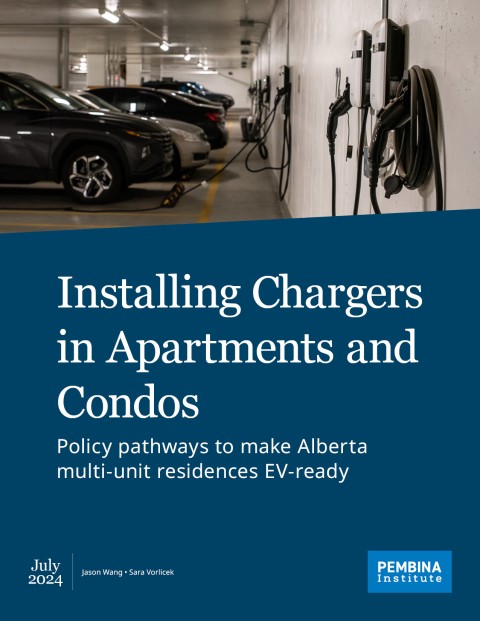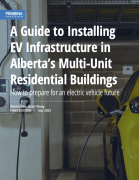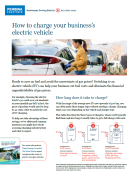This short guide summarizes the actions that Alberta municipalities and the provincial government can take to support the installation of electric vehicle (EV) charging infrastructure in multi-unit residential buildings (MURBs). The guide additionally outlines measures that stakeholders such as financial institutions, utilities and industry associations, can implement to contribute to electric vehicle preparedness in MURBs, which will make a building more desirable to live in and boost its market value ─ a clear benefit to property owners.
Given current and projected growth rates in the EV sector, policy makers, utilities and municipalities need to create a regulatory environment that will advance the construction of charging infrastructure to keep pace.
Increasing access to charging equipment ─ regardless of the type of housing residents live in ─ is essential to a successful transition away from internal combustion vehicles while improving both air quality and health outcomes. Moreover, the installation of chargers in MURBs addresses equity issues by ensuring that residents, independent of income level, have equal access to the power sources they need to operate a personal vehicle.
The following policy pathways are actionable measures that can help make MURBs EV-ready:
What municipalities can do: Key takeaways
- Regulatory measures: Require new MURBs to be 100% EV-ready, meaning there is sufficient electrical capacity and infrastructure in place to power EV chargers that can be installed at a later date; establish targets to ensure progress.
- Financing opportunities: Set up a rebate program and other financing mechanisms to encourage building owners and condo boards to install an adequate number of chargers and make upgrades to the power supply as needed.
- Community outreach: Develop educational material for residents, property managers, building owners, and condominium corporations to learn more about charging infrastructure installation.
What federal and provincial governments can do: Key takeaways
- Regulatory measures: Standardize and streamline permitting and administrative processes (which can fall under Right to Charge legislation) and update building codes to encourage investment and help lower costs. Directing utilities to develop favourable rate structures and demand response systems will also incentivize buy-in and private investment.
- Financing opportunities: Set up a funding body to contribute to municipal-level financing for EV-ready retrofits in MURBs.
- Community outreach: Arrange ways to connect property owners and condo associations with service providers and engineering consultants who can provide advice on best practices for installing charging equipment.
What financial institutions and utilities can do: Key takeaways
- Regulatory measures: Consider utility investments in EV charging infrastructure and demand response programs to lower costs and improve the viability of installing and using chargers for both tenants and owners.
- Financing opportunities: Provide loans designed specifically for retrofits of existing MURBs.






